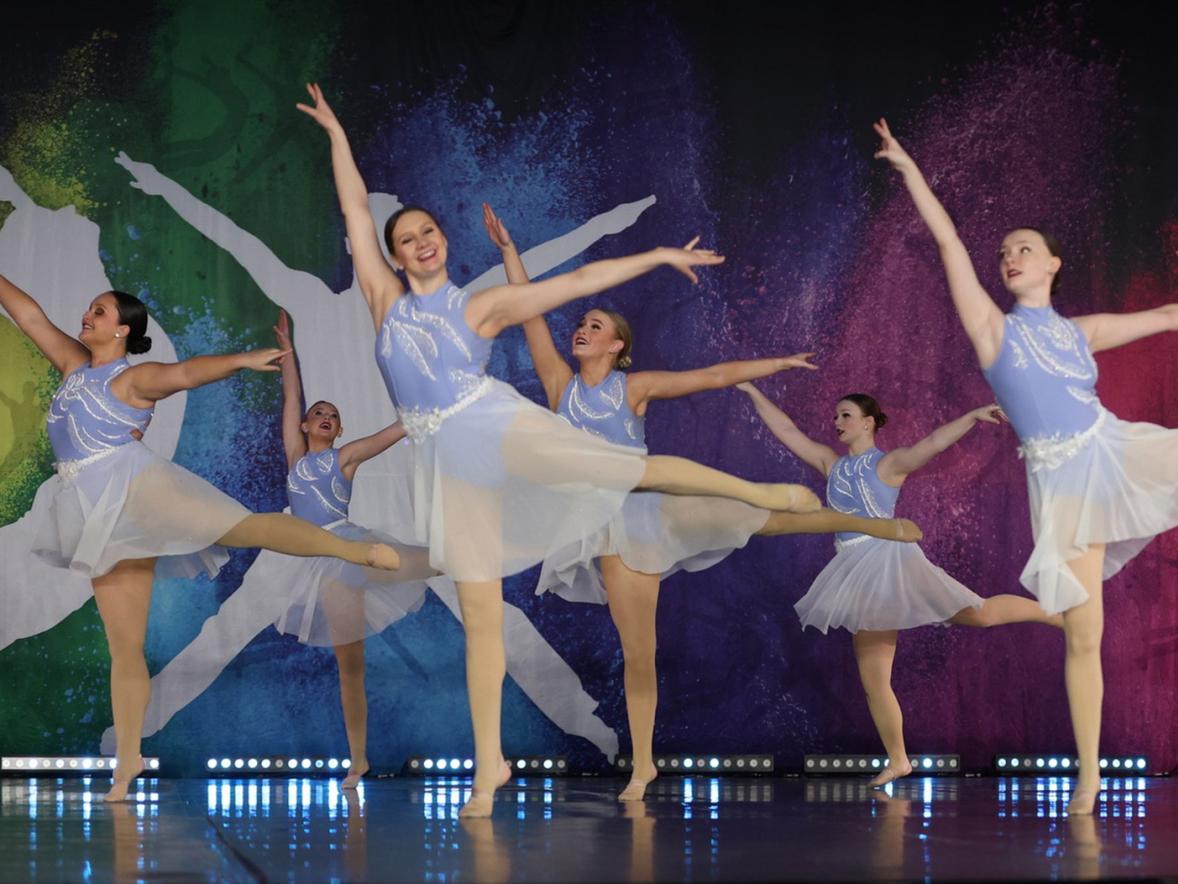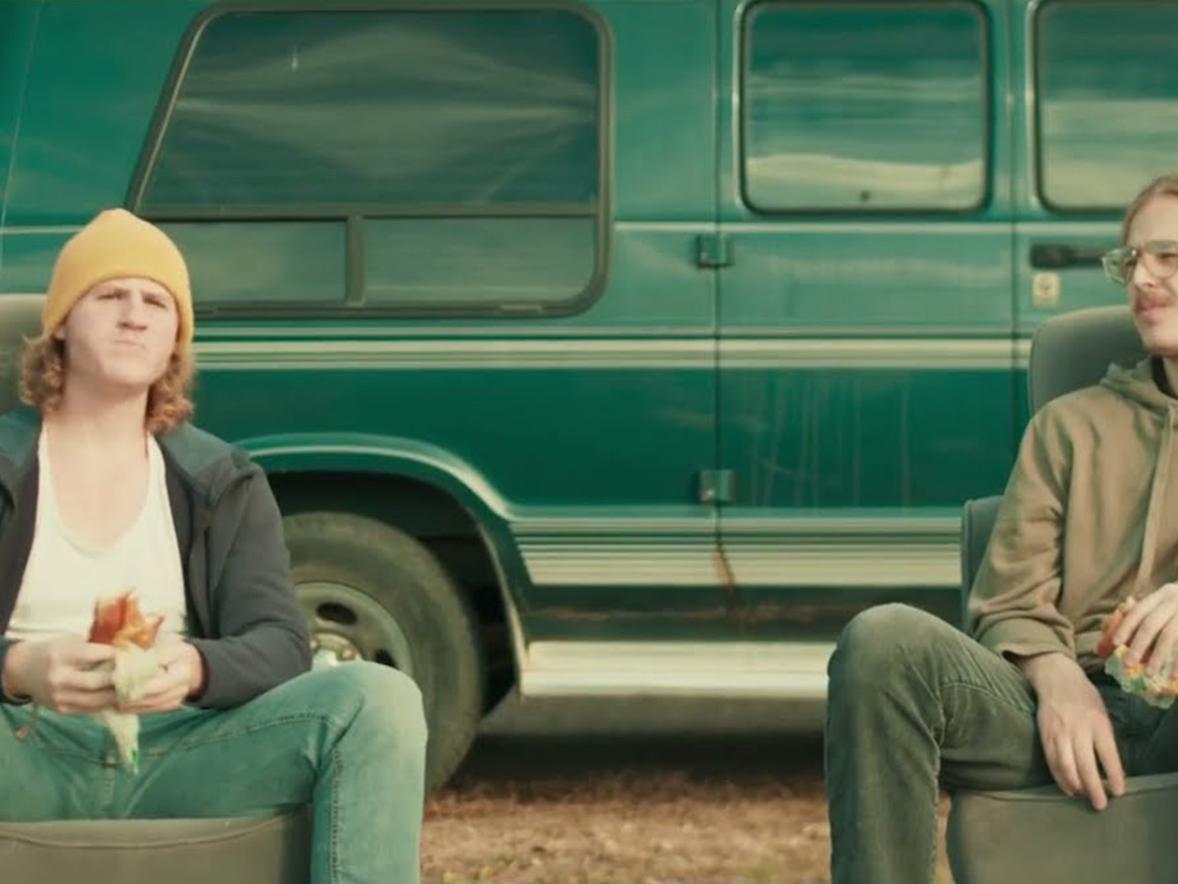There is a buried waterway on the east side of St. Paul, flowing through storm pipes under neighborhoods, businesses and the heavy traffic of I-94.
But Lower Phalen Creek was not always hidden. It historically flowed out of Lake Phalen, meandering toward the Mississippi River. It served as a corridor for the Dakota people, as they made their way by canoe from lake to lake, gathering wild rice.
In the 1930s, the creek was redirected, buried to make way for housing and urban development.
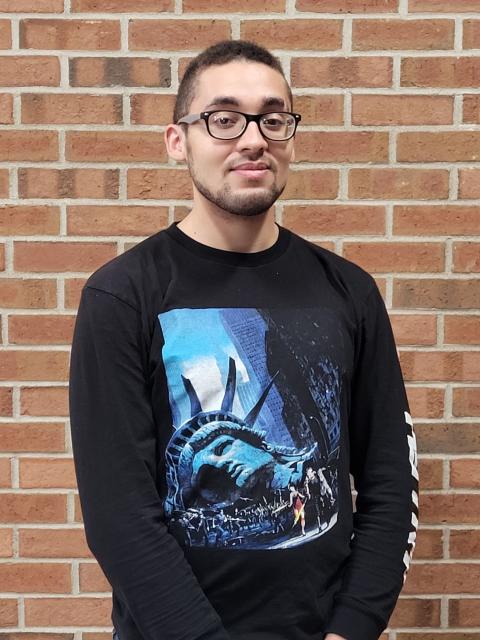
Recently, University of Wisconsin-Stout entertainment design senior Josiah McClelland and School of Art and Design Professor Tamara Brantmeier collaborated on “Daylight,” a short film that brings attention to the restoration of the creek. Daylighting is the process of bringing a creek back above ground. The restoration is led by the Lower Phalen Creek Project, a Native-led, environmental conservation nonprofit founded in 1997.
Through their film, Brantmeier and McClelland wanted to reassemble the natural beauty of the Dakota land, invite viewers to join in the project and reframe the story of colonization through imagery and audio, both critical to their narrative.
"Daylight" was on view at the ArT at 967 Payne Gallery, as part of the Solidarity Street Gallery Event, Sept. 23 to 25 in St. Paul. The film, which is four minutes and sixteen seconds in length, ran in a continuous loop. The gallery event featured visual art, dance and music along Payne Avenue, and at Swede Hollow Park and the East Side Freedom Library.
McClelland hopes that people come away from “Daylight” with a different perspective on nature.
“We tried to slow down and capture the little moments of a stream in flow,” he said. “Not many people slow down and take in the small things in life and even less take in nature. I hope this short film influences people to go out more and look around in their own communities for issues that they want to daylight.”
Bringing it to ‘Daylight’
“Daylight” opens with soft light reflecting on the creek’s rippling surface. Tree frogs peep and mallard ducks call under willow boughs. The frame is slightly out of focus, like watching a nature documentary from the 1950s.
But hidden just below the creek’s surface, iron bars seem out of place. And nature’s peaceful lullaby is interrupted by buzz saws slicing through metal. A smokestack looms past the riverbank.
Brantmeier, who lived in Menomonie, returned to the Twin Cities in August. In looking for happenings in her neighborhood for her and her son, she found the Solidarity Street Gallery’s call for artists, and the event theme of art and social justice interested her.

Having taught the majority of her painting courses virtually last year because of the pandemic, Brantmeier spent her time “looking through different lenses and experiencing the world through screens.” While investigating video shorts this summer, she saw McClelland, who had been in her Painting 1 class, and knew that one of his prior projects had a socio-political bent to it.
“I wanted the opportunity to work with a student and create a new work for the exhibit, and I had an inkling that Josiah might be the right student because of his awareness,” she said.
Video has been a part of McClelland’s life for as long as he can remember. In high school, at Glenwood City, he was a member of the student-led broadcast Topper Times, where he and his friends created short videos and skits.
“I fell in love with video shooting and editing,” he said. “Coming to Stout seemed like the logical next step.”
With a digital cinema concentration, McClelland likes to experiment with video and explore artistic ways to communicate stories visually.
McClelland, who will graduate in the spring, has family in the Phalen area, but he was unaware of the creek restoration project. “After hearing the story about the efforts to daylight a creek for the good of the community, I was thoroughly inspired,” he said.
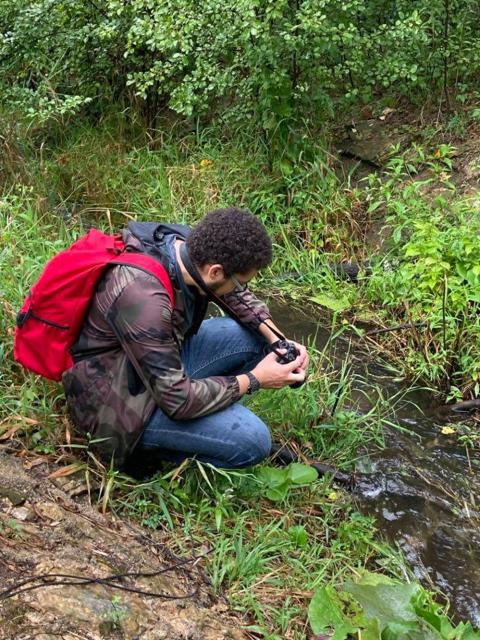
“Daylight” took six to eight weeks to put together. Brantmeier was creative director and had a vision in terms of the film’s narrative arc. But in collaborating, she wanted to honor McClelland’s voice as a student and creator. He used old and new technology – a digital camera and a 1980s VCR video recorder helped to capture the sense of decades passing.
“While I had one picture in my head, the film turned out different that I imagined,” Brantmeier said. “It gave me a sense of possibility. I’m so happy with it and to be able to work with Josiah.”
During the gallery event, McClelland was able to meet people from the Lower Phalen Creek Project and the East Side Freedom Library, which works to inspire solidarity and advocates for justice and equity. He met a couple of filmmakers who were excited to connect him with others working in conservation.
For Brantmeier, it was important to see McClelland connect with BIPOC – Black, Indigenous, People of Color – artists in the Twin Cities, where art is flourishing. It was an opportunity for him to witness representation in art and filmmaking, an opportunity he was not often afforded in his hometown or university, she said.
McClelland believes representation is important because “once we have more diversity, more stories can be told,” he said. “It’s not just about people in the audience. It’s showing up as creators – showing the world what hasn’t been seen before.”
‘Art is expression’
Kimberly Loken, program director of animation and digital media, knows collaboration is critical in design industries. “We’re pleased that Josiah is exploring such collaboration in the art world and on critical contemporary topics; it will distinguish his portfolio,” she said.
“Tamara brings enthusiasm and care to all of her student interactions – teaching, advising, leading the Pre-BFA Experience,” Loken added. “She’s an excellent creative partner.”
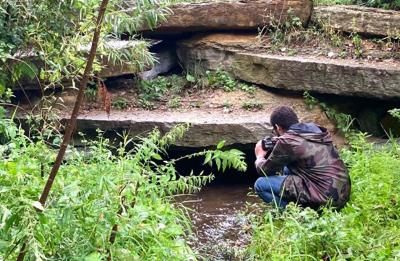
Brantmeier thinks the gallery audience was very responsive to both the sounds and quality of the imagery in the film. “For a lot of people, it elicited memories of childhood. It’s meditative,” she said.
Brantmeier felt connected back to moments in her childhood when she would make viewfinders with her hands as a way to see the world around her. She still uses the technique as an artist when painting light and shadow phenomena.
“It’s the same when I use a phone camera,” she said. “The lens allows me to do that – to look through and catch those simple moments in nature.”
She feels honored that “Daylight” was curated near Native-American artists and hopes that non-Native artists’ work can support the vision of environmental justice through art. “It starts a conversation about what reparations look like,” she said. “Is it a check? Is it returning land? Is it finding other ways through one’s voice?”
For McClelland, art is expression of oneself. “It’s a reflection of the times and of the environment in which it is created,” he said. “Reflecting more than the feelings of the artists, art expands to contain the context of current events and the unconscious mind. I hope that my art is viewed in such various lenses, as it is a snapshot of its time."
The School of Art and Design offers seven fine arts degrees, including a master’s in design, and a Bachelor of Science in arts administration and entrepreneurship.





